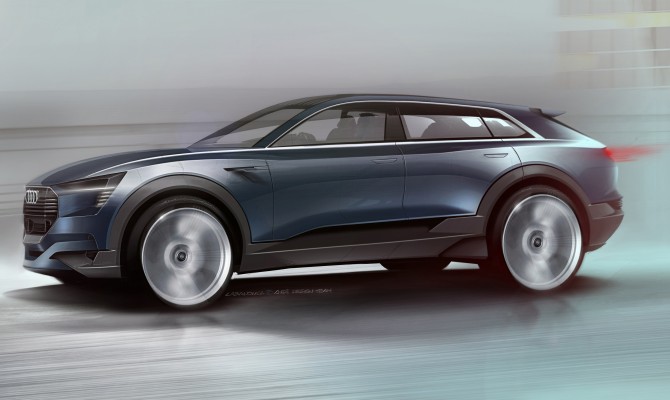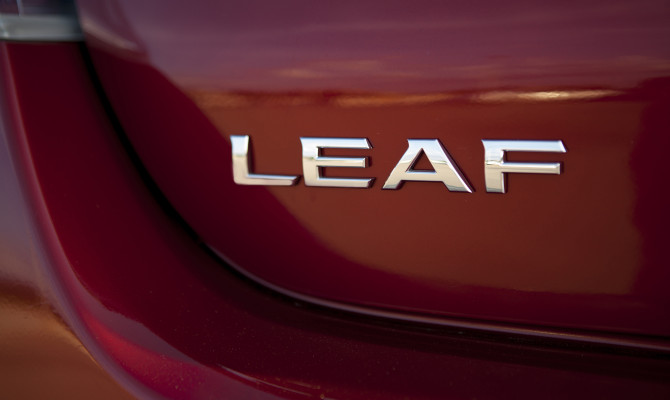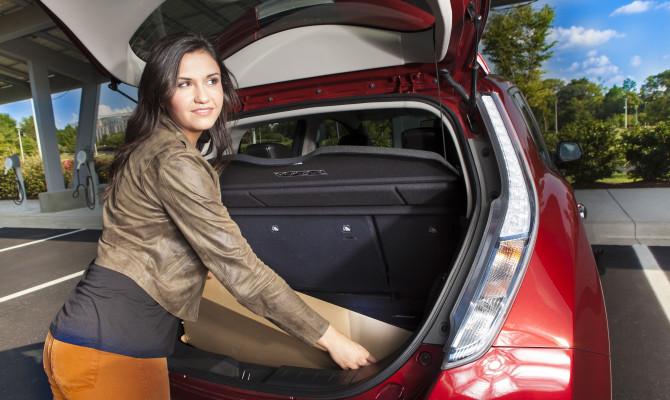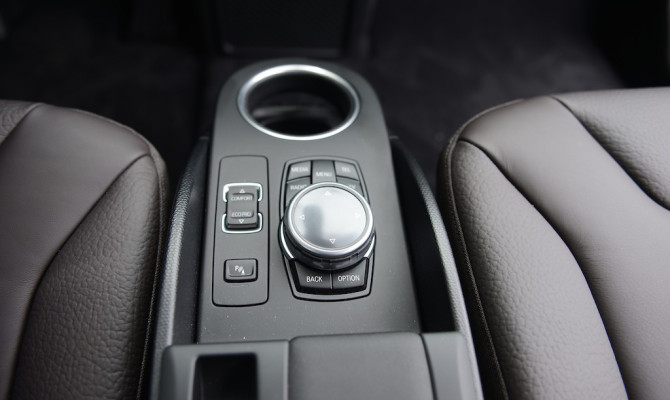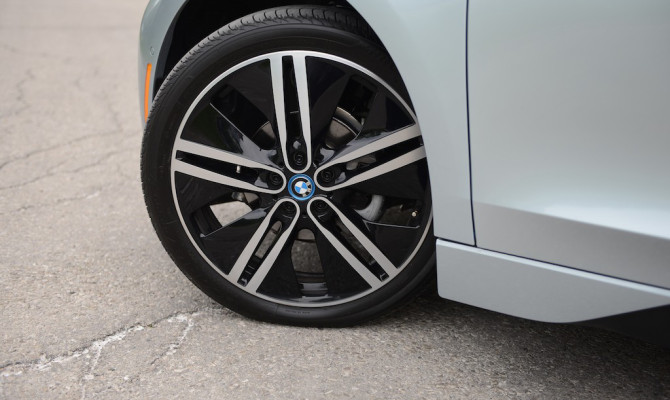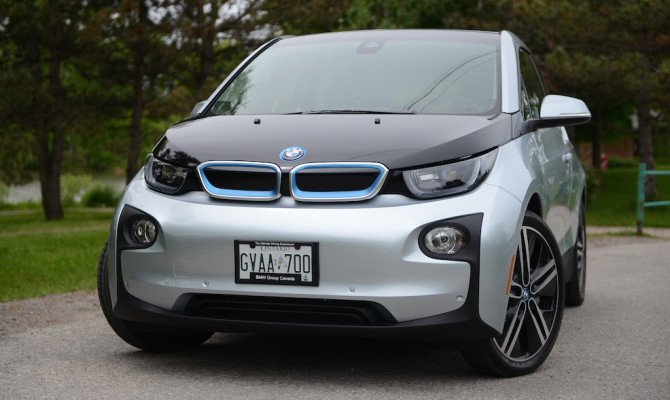During a short drive in the all-new Chevrolet Bolt electric vehicle, I began to wonder if its creators had discovered the secret to perpetual motion.
When I pulled off the lot, the screen readout indicated the maximum range that day, before a plug-in recharge was needed, would be a maximum of 244 kilometres. A full battery might have pushed the upper limit to 383 kilometres but what the range promised would be more than enough for my jaunt.
If I were heavy footed then I might be lucky to reach 169 kilometres; that would be embarrassing. The number 207 shone brightly through the spokes of the steering wheel. It was the more realistic range based on normal driving style and conditions.
And it offered an irresistible challenge to this competitive son of a gun! – Within a couple of minutes, it fell to 205; mind you the car had motored three clicks. When you lift your foot off the accelerator the car slows smoothly and regenerates electricity to top up the battery. Get the timing right and no more than a touch on the brake is necessary until you close in on the car ahead at the light. One pedal driving – almost!
This was going to be fun. By the time I’d clocked 10 kilometres, the readout had jumped to 209 – more range than when I set out. Cool. Maybe that 244 mark was not so optimistic. Stop and go traffic across town brought me down to earth, so to speak. My 25-kilometre drive came to an end at the recharging station opposite Granville Island Market in Vancouver. Didn’t need to plug it in but f
ree juice is free juice.
No sooner was I out of the car when a guy leapt from the other side of the road, narrowly missing a meet with one of those gas guzzling gas-electric hybrid powered taxi cabs. Just kidding. About it being a gas guzzler that is.
He wanted to know whether I would recommend the crossover-like vehicle. I proudly told him the display should really show a remaining range of 182, not the 190 he saw. Told him that if he couldn’t afford the $42,895 (plus taxes) sticker price (less a $5,000 point of purchase rebate from the Clean Energy Vehicles program) he could enter to win one at the Vancouver International Auto Show (March 28-April 2). Check it out on vancouverinternationalautoshow.com/bolt.
For the record, the gas economy equivalency is 1.8/2.1 L.100km (city/hwy). Green credentials intact, yours truly shopped and returned to drop a bag or two in the surprisingly generous space that lies beneath the rear hatch. Now for a stretch on the freeway, that would surely deplete the battery.
Well, it did and at a faster rate as I sped by some surprised faces at 100 klicks. The Bolt is similar in appearance to many cute utes on the road today but it’s a wolf in sheep’s clothing. The electric power launches the small five door family car at a rate rarely seen off track. In less than seven seconds the needle is closing in on 100 km/h.
The Bolt is loaded with what every family wants in terms of safety equipment and entertainment systems. Available active safety features including Side Blind Zone Alert, Rear Cross Traffic Alert, Forward Collision Alert and Forward Pedestrian Alert.
“The Hyundai folks gritted their teeth as the snowflakes swirled but they were smiling by the time the event wound down.”
“Its typical SUV body and flat, coupe-like cabin give the Audi e-tron quattro concept a very dynamic appearance.”
Audi has released an artist’s impression of its e-tron quattro concept car, which will be unveiled
The sporty SUV is designed from the ground up and follows the Audi “Aerosthetics” concept, combining technical measures for reducing aerodynamic drag with creative design solutions. Movable aerodynamic elements at the front, on the sides and at the rear improve the air flow around the car. The aerodynamically optimized underbody is completely closed. With a cd value of 0.25, the car sets a new record in the SUV segment. This contributes considerably to the long range of more than 500 kilometres.
The study is based on the second-generation modular longitudinal platform, which provides considerable scope for the drive system and package. Its length is between that of the Audi Q5 and the Q7. Its typical SUV body and flat, coupe-like cabin give the Audi e-tron quattro concept a very dynamic appearance. The spacious interior offers room for four people.
The large lithium-ion battery is positioned between the axles and below the passenger compartment. This installation position provides for a low center of gravity and a balanced axle load distribution. And that gives the car better driving dynamics and driving safety than other vehicles in the segment.
Audi uses its experience with the electrically driven Audi R8 e-tron sports car for the drive system. Three electric motors – one on the front axle and two on the rear axle – drive the Audi e-tron quattro concept. And that makes it an electrified quattro, the e-tron quattro – efficient and dynamic at the same time.
Contact the writer at keith [dot] morgan [at] drivewaybc [dot] ca
The Nissan LEAF miraculously cut a journey in half this week.
I’ll explain. I took the plug-in sedan on a 43-kilometre trip from Vancouver to Driveway HQ, on 152nd Street, in Surrey. When I set out, the screen display showed that I could drive emission-free for 146 kilometres.
Now, I could have taken off like an F1 racecar and street raced all the way, because electric power offers instant tire squealing torque if you press the pedal to the metal. But that’s not me. Spurred by my ecofriendly driving the previous day, the clever car had decided earlier in the day that I could do 156 kilometres on a full charge. Not boasting but that’s easily more than 20 kilometres better than the average driver can expect to achieve. Okay, maybe my head is swelling.
The big 1-4-6 winked at me. I threw the stick into ECO mode and with two flicks of the wrist pushed it into the enhanced B-mode, which puts the braking power regeneration into overdrive, so to speak.
I glided silently down the road, picking up pace ever so gradually in the busy city traffic. Rolling down the hills to Marpole, I could feel the juice from the brakes topping up that battery.
On the freeway, I hit the posted speed limit and 40 minutes later pulled into HQ. The display flashed 126. I had covered 43 klicks with the power required to move the car just 20! Such fun.
Next week: more on the joy of driving electric.
“In town, the BMWi3 is the perfect shopping cart, extremely manoeuvrable and the fastest parker in town!”
It is suggested that imitation is the sincerest form of flattery though it’s doubtful that belief is enthusiastically shared by folks in the fiercely competitive auto business.
Nevertheless, to quote another common saying, all is fair in love and war. So, prepare to see clones or lookalikes of the all-electric, BMW i3 emerging from the production lines of major manufacturers in the next few years.
In Detroit recently, my head spun when I clapped eyes on Chevy’s all-electric Bolt, even its rusty colour was similar to the i3 I drove at the launch in Amsterdam in 2013. As I remarked at that time, the compact eco-Bimmer has a funky look and its one that’s gaining traction especially among the younger generation.
My head spun again the other week when I picked up a production version to test in local conditions from Brian Jessel BMW in Vancouver. It was identical to the Dutch example! Well, not quite. It did have an additional feature not present in the launch model. It had a range extender, which is marketing-speak for a two-cylinder, 647cc gas engine. It doesn’t drive the wheels but kicks in as an electricity generator designed to top up the battery when it runs low.
It’s a must addition for Canada unless your daily trek clocks up no more than the promised 130-160 kilometres range when setting out with a fully-charged battery or you don’t have access during the day to the charging stations now springing up in many urban core parking lots.
Based on my Dutch experience and a few days buzzing around the Fraser Valley, the top end is a shade optimistic, especially in poor weather when one tends to crank up the heat. Mind you, with a starting price just short of $45,000 the $4,000 generator pushes that already substantial cost up significantly. The nine-litre gas tank that feeds the tiny engine boosts the range to around 300 kilometres.
What is indisputable is just how much fun this car is to drive. In town, the BMWi3 is the perfect shopping cart, extremely manoeuvrable and the fastest parker in town! The lithium-ion battery, housed in an aluminum cage below the five-seater cabin, enables the electric motor to mimic a race car at the green and back into a tight spot equally quickly!
You think I jest? After seven seconds of acceleration, the display shows 100 km/h. The need to pass fast on the freeway is also easily achievable with a five-second count between 80 and 120 km/h.
Drive like that all day and the gas engine will be firing up in no time but the power is there if you need it. Drive sensibly and to the prevailing weather conditions and you will get close to the advertised range. Sticking to the sluggish EcoPro and EcoPro+ modes will add 20 and 40 km to the range. Nah.
But it’s not just about operator proficiency: The carbon-fibre body is light and regenerative braking constantly tops up the cells. Using a regular domestic power point, I was able to recharge the i3 overnight and if you install a fast charger, you can be back on the road in three hours.
Interestingly, the BMW Group has partnered with the live transit information service Moovit (IOS and Android apps available). The app is an interactive service that informs the user about local transit options once you have parked up and plugged in the i3. Crowd sourced information also tells you which forms of transport are full and where there are delays. You can take advantage of this fabulous app without the need to shell out for an i3!
Electric car buyers need to know if they can live with the limits of the electric cars’ range or if they want the flexibility to extend the range with an on-board generator…
This story could be obsolete in a month as automakers add electrification to existing models and introduce all new models, at an incredible rate.
The market for electric cars or plug-in hybrids is very small but it’s growing. The success of Tesla’s Model S has shot its stock price into the stratosphere, as investors bet on that company’s emergence as the electric car and technology leader. The stock price should really reflect the cars sold, as Tesla can only make about 20,000-25,000 cars annually for a worldwide market.
The Market
Green Car Report recently published a sales report on all electrics sold in Canada for the first six months of the year. The list of vehicles sold is compiled from companies’ self-reporting but Ford’s data is missing. This Green Car Report estimates that Ford’s numbers will push overall electric sales to 2,200 for the first half of the year, a 50 per cent improvement over a year ago. What we do get is a good snapshot of the market. With only 1,941 electrics officially counted, amounts to only 0.21 per cent of the overall Canadian marketplace. (Canadians are on track to buy almost 1.7 million vehicles this year.) So these are tiny but important numbers and the trend is higher. The clear winner isn’t the Tesla at all; in fact it is in third place behind the Chevy Volt and Nissan LEAF. Chevy sold 831 Volts up to July with Nissan selling 462 LEAFs and Tesla moving 290 Model S cars. The Smart Full Electric Drive comes in fourth with 163 cars sold and in its first month of sales (June) the BMW i3 looks good with 50 units sold.
Not all electric cars are the same
What many people don’t realize is the complexity of the electric car market. I look at it this way, if the car can be plugged into an outlet; it is at least partially electrified. There are pure electric cars like the Nissan LEAF, Tesla Model S, Smart Electric, Mitsubishi i-MiEV and BMW’s new i3 – all of these use just electricity to propel the car. Then there are electric cars that have an onboard generator, should the range of the electric pack limit driver’s intentions. The Chevy Volt, Cadillac ELR, the Toyota Prius Plug-In and the BMW i3 are, or can be equipped, with a gasoline engine to either drive the wheels or charge the battery. This is one area where the Chevy Volt wins. With roughly a 65 km range on pure electricity and a small generator on board to extend the range indefinitely, this car makes a lot of sense. This is why the BMW i3 has an optional generator for $3,000 to extend the range of that model. But if the buyer chooses this option, the range of pure electric drive is limited because of the added weight of the car. Electric car buyers need to know if they can live with the limits of the electric cars range or want the flexibility to extend the range with an on-board generator.
What is still to come?
We are living in interesting times.
More and more electric cars are being added, not to meet the demand but to meet regulatory requirements. For the model year 2016, the United States has a new cooperate average fuel economy (CAFE) standard that has each manufacturer trying to hit 35.5 mpg average across their fleet, including small trucks. This isn’t doable with the current internal combustion engine technology, so these manufacturers are looking to electrification as the answer. Even though more and more electric versions will arrive, don’t expect them to sell. In fact, most car companies don’t expect them to sell at all; they just want the mpg credit towards the new regulations. This might sound cynical but watch how many electric cars will arrive, especially for the 2016 model year, and how many you will actually see on the road. Most are built at a loss, to offset thirstier, gas-loving machines.
Verdict
Even though electric car sales are very small and many new models will go unnoticed, the trend to electrification is here. With markets like China mandating a percentage of electric cars to offset its horrific pollution, will help move the numbers of electric vehicles worldwide. This, along with steady adoption rates here in North America will help promote better charging infrastructure. Another factor is the price to own an electric car. The Smart Electric is priced at $27,000 making it the least expensive full electric car. With Nissan hacking its price on the LEAF to just over $31,000 and the Volt starting at roughly $35,000, these cars are more affordable than ever. I think the BMW i3 is very attractive for $45,000 because it is a luxury brand at an attainable price. The real showstopper will be the Tesla Model III that they hope to sell for US$35,000 with more than 400km of electric range when it is introduced in 2017.
Even though Tesla has the sex appeal going right now, don’t count out the other mainstream manufacturers with decades, if not centuries of auto making knowhow, to take on the challenge.
Recent Comments
- { Enjoyed your Forest of Bowland in the BMW X5M, particularly the photo of the BMW in front of the main part of Stonyhurst College where... }
- { Bantam designed the Jeep, not Willy's or Ford. The American military gave the original Bantam prototype to Willys and Ford to copy. There is plenty... }
- { All Escalades come with a 6.2-lilter V8 engine that produces 420 horsepower. A six-speed automatic is the only transmission offered and drives the rear wheels.... }
- { Alexandra is an excellent journalist. }
Popular Posts
- Journey to a ‘Sparkling’ Luxury Okanagan Resort “Four lucky readers will put a Dodge Journey’s weekend-...
- The Need For Speed: Hike Those Highway Limits More than half of those polled believe the province sho...
- Drives-U-Crazy… Erratic drivers. An early morning drive from Kelowna to Vancouver is nor...
- Readers Respond: The Pros and Cons of Increasing B.C. Speed Limits Increasing the speed limits will only increase risk to...
- Honda CR-V Review: The Compact Crossover To Get Things Done The CRV is a very stylish and aerodynamic crossover veh...




